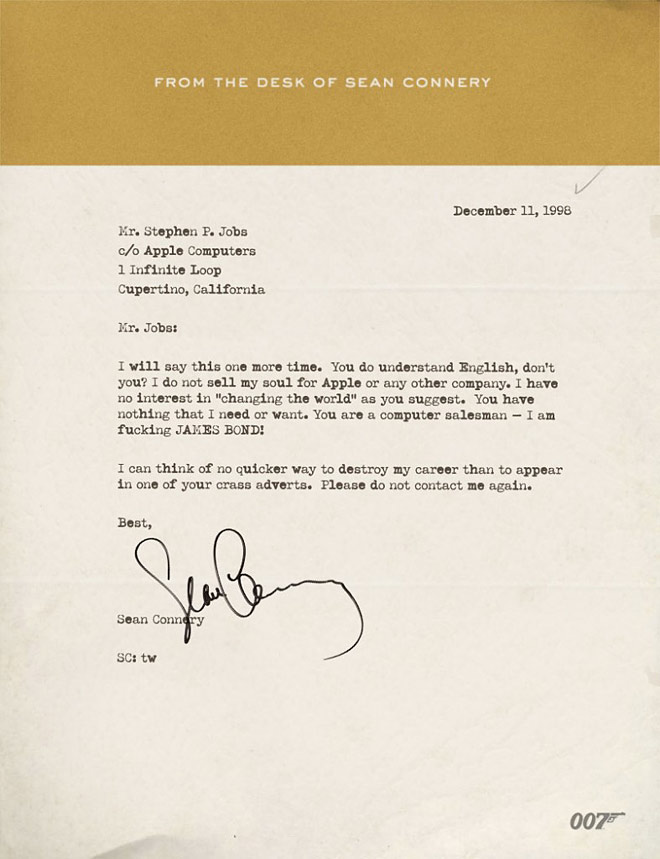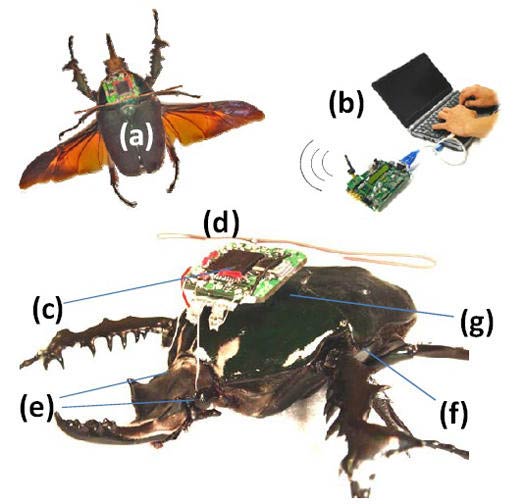technology
‘Two-timing Tartar Twisters!’ –Captain Haddock
Like the ampersand, the ‘@’ symbol is not strictly a mark of punctuation; rather, it is a logogram or grammalogue, a shorthand for the word ‘at’. Even so, it is as much a staple of modern communication as the semicolon or exclamation mark, punctuating email addresses and announcing Twitter usernames. Unlike the ampersand, though, whose journey to the top took two millennia of steady perseverance, the at symbol’s current fame is quite accidental. It can, in fact, be traced to the single stroke of a key made almost exactly four decades ago.
In 1971, Ray Tomlinson was a 29-year-old computer engineer working for the consulting firm Bolt, Beranek and Newman. Founded just over two decades previously, BBN had recently been awarded a contract by the US government’s Advanced Research Projects Agency to undertake an ambitious project to connect computers all over America. The so-called ‘ARPANET’ would go on to provide the foundations for the modern internet, and quite apart from his technical contributions to it, Tomlinson would also inadvertently grant it its first global emblem in the form of the ‘@’ symbol.
related { There are several theories about the origin of @ | Merchant@florence wrote it first 500 years ago }
Cuz they see me in the hood, poppin wheelies on my Kawasaki
The Wall Street Journal says Apple is thinking of making a bid for Hulu and Seattlepi.com says Microsoft’s is no longer interested, which leaves Amazon, Apple, Google, Yahoo, and any unnamed parties. I can’t think of any unnamed parties, by the way, so I’m guessing one of these will walk with Hulu, which went into play a couple weeks ago following an unsolicited (and still unidentified) bid.
Of course the three big network owners of Hulu will guarantee five years of continued program access with the first two years exclusive. That’s because they have no money in Hulu and each stands to walk with $600+ million from the sale, but only if there is a sale. Without such an exclusivity period there will be no sale and no $600+ million. None of these networks can buy out the others for antitrust reasons so the “networks might balk” story is just to sell newspapers (or electrons). Hulu will be sold.
And this is from the gospel of Mary Magdalene herself
Times have not been good for electronic media giant Sony. The New York Times recently carried a short article that reported the company has lost 37 percent of its market value over the last six years. It has been hit by one disaster after another. Future projections do not look good either.
While there are many explanations that analysts offer to explain the dismal performance of this once stellar company, there is one explanation that is never mentioned: the Curse of the DaVinci Code.
It has been six years since Sony began production of the movie, The DaVinci Code, based on the bestselling yet now forgotten book with the same title by Dan Brown. The book’s blasphemous affirmations denied the Divinity of Christ and claimed He was married to Saint Mary Magdalene and had children, which offended countless faithful at the time. Numerous books and studies debunked these absurd and horrific theses along with others that author Dan Brown nevertheless affirmed were true.
From the moment production began, it appears as if the Curse of the DaVinci Code descended upon Sony and there it still remains.
{ The American Society for the Defense of Tradition, Family and Property | Continue reading }
You know, if there were gangs around like in the old days, I’d be running things, not you

Here is an obvious truth overlooked by too many: Almost all companies die. They have a theoretically infinite lifespan, but eventually, their day in the sun passes, their parts are sold off for scrap, they fade into the dim dusty pages of history. Sure, Europe has centuries old breweries and specialty foods companies, but they are notable because they are exceptions.
Think back to the original Dow Jones Industrials, filled as it was with Steam and Leather Belt companies, all gone bankrupt nearly a century ago. How many of the original companies in the DJIA are still even in existence?
Microsoft was once technology’s behemoth, the 800 pound gorilla, an unstoppable anti-competitive monopolist. And today? It was a great 20 year run, but it’s mostly over. They still have the cash horde and engineering chops to create a smash hit like the Kinect, and they are a cash cow, but the odds are, their glory days are behind them.
While some companies manage to have a second act — Apple and IBM are notable examples — they too, remain the exception.
Today, tech companies’ lifespans are measured in internet years. Any firms dominance of any given space is likely to cover a much smaller period — way less than a decade in real time. The obvious poster child for this syndrome? MySpace. Even mighty Google is seeing market share growth in search slip as competitors nip at its heels.
All of which leads me to the question of the day: Has Facebook missed its IPO window? (…)
There are signs that Google Plus is a worthy competitor: They quickly amassed 10 million users, and that is while they are in Beta.
drawings { Wes Lang }
And it’s either feast or famine, I’ve found out that it’s true

How much would someone have to pay you to give up the Internet for the rest of your life? Would a million dollars be enough? Twenty million? How about a billion dollars? “When I ask my students this question, they say you couldn’t pay me enough.”
(…)
Reframe this offer so that it has more time to generate social support, and no way would most people reject it.
At 5% interest, a million dollars pays ~$4,000 a month. So let’s imagine offering people $4,000 to give up TV or internet for one month, and then renewing the offer every month afterward – they could go on or off the plan at will.
photo { William Eggleston }
I know a man named Hank, he has more rhymes than a serious bank
Amazon.com made waves in March when it announced Cloud Player, a new “cloud music” service that allows users to upload their music collections for personal use. It did so without a license agreement, and the major music labels were not amused. Sony Music said it was keeping its “legal options open” as it pressured Amazon to pay up.
In the following weeks, two more companies announced music services of their own. Google, which has long had a frosty relationship with the labels, followed Amazon’s lead; Google Music Beta was announced without the Big Four on board. But Apple has been negotiating licenses so it can operate iCloud with the labels’ blessing.
The different strategies pursued by these firms presents a puzzle. Either Apple wasted millions of dollars on licenses it doesn’t need, or Amazon and Google are vulnerable to massive copyright lawsuits. All three are sophisticated firms that employ a small army of lawyers, so it’s a bit surprising that they reached such divergent assessments of what the law requires.
So how did it happen? And who’s right?
{ Ars Technica | Continue reading }
Why does music elevate your mood, move you to tears or make you dance? It’s a mystery to most of us, but not so much to evolutionary neurobiologist Mark Changizi.
My research suggests that when we listen to music without any visual component, our auditory system—or at least the lower-level auditory areas—”thinks” it is the sounds of a human moving in our midst, doing some sort of behavior, perhaps an emotionally expressive behavior.
The auditory system “thinks” this because music has been “designed” by cultural evolution to sound like people moving about. That is, over time, humans figured out how to better and better make sounds that mimicked (and often exaggerated) the fundamental kinds of sounds humans make when we move.
I lay out more than 40 respects in which music sounds like people doing stuff. At the core of “moving people” is the walk. The human gait has unique characteristics, from its regularly repeating step (the beat) to the sounds of other parts of the body during the gait that are in time with the step (notes, more generally).
‘There is always a sheet of paper. There is always a pen. There is always a way out.’ –H. L. Mencken

{ George Widener, for future robots, orientation map of events, for the year 4421| Elenore Weber of Ricco/Maresca Gallery in New York defined Widener, one of the most widely collected living outsider artists, as “a high-functioning savant” and a “lightning calculator.” His bio reads: “Like some people with aspergers, he is gifted in dates, numbers, and drawing. In his memory, he has several thousand historical dates, thousands of calendars, and more than a thousand census statistics.” | Salon }
‘A hidden connection is stronger than an obvious one.’ –Heraclitus

Sybil accounts are fake identities created to unfairly increase the power or resources of a single malicious user. Researchers have long known about the existence of Sybil accounts in online communities such as file-sharing systems, but have not been able to perform large scale measurements to detect them or measure their activities. In this paper, we describe our efforts to detect, characterize and understand Sybil account activity in the Renren online social network (OSN). We use ground truth provided by Renren Inc. to build measurement based Sybil account detectors, and deploy them on Renren to detect over 100,000 Sybil accounts. We study these Sybil accounts, as well as an additional 560,000 Sybil accounts caught by Renren, and analyze their link creation behavior. Most interestingly, we find that contrary to prior conjecture, Sybil accounts in OSNs do not form tight-knit communities. Instead, they integrate into the social graph just like normal users. Using link creation timestamps, we verify that the large majority of links between Sybil accounts are created accidentally, unbeknownst to the attacker. Overall, only a very small portion of Sybil accounts are connected to other Sybils with social links. Our study shows that existing Sybil defenses are unlikely to succeed in today’s OSNs, and we must design new techniques to effectively detect and defend against Sybil attacks.
images { 1. Vitaly Virt | 2. Melvin Sokolsky }
Dude I’ll smoke you every motherfucker under you
While the tech world is buzzing about the launch and implications of Google’s new social network, Google+, it’s worth noting that Google isn’t just in a war with Facebook, it’s at war with multiple companies across multiple industries. In fact, Google is fighting a multi-front war with a host of tech giants for control over some of the most valuable pieces of real estate in technology. Whether it’s social, mobile, browsing, local, enterprise, or even search, Google is being attacked from all angles. (…)
Before I investigate each battle front in the war, it’s important to highlight the fact that perhaps no other tech company right now could withstand such a multifaceted attack, let alone be able to retaliate efficiently. Sure, Apple might get pushed around by Facebook, so it integrated Twitter into iOS5, and sure, Amazon and Apple have their own tussles over digital media and payments, but at the end of the day, Google is in this unique and potentially highly vulnerable position that will test the company’s mettle and ability to not only reinvent itself, but also to perhaps strengthen its core. (…) Google must battle on at least six fronts simultaneously.
What’s the use in regrets, they’re just things we haven’t done yet

Back in 1999, a computer scientist at Cornell University began monitoring the way that the Windows NT 4.0 operating system used files. What he found was astonishing.
About 80 per cent of all files that NT creates are either over-written or deleted within 5 seconds of being born.
Today, Ragib Hasan and Randal Burns at Johns Hopkins University in Baltimore say this ought to give programmers pause for thought. Deleting data requires energy, which means that a substantial fraction of a computer system’s energy budget is currently devoted to creating and then almost immediately scrubbing data.
And if the wasted energy weren’t bad enough, computer memory has a limited life span. Flash memory, for example, has a lifespan of 100,000 cycles. So cycling it needlessly brings the inevitable breakdown closer.
photo { Jesse Pollock }
‘Don’t wait to be hunted to hide.’ –Samuel Beckett

One way to study a network is to break it down into its simplest pattern of links. These simple patterns are called motifs and their numbers usually depend on the type of network.
One of the big puzzles of network science is that some motifs crop up much more often than others. These motifs are clearly important. Remove them (or change their distribution) and the behaviour of the network changes too. But nobody knows why.
Today, Xiao-Ke Xu at Hong Kong Polytechnic University and friends say they know why and the answer is intimately linked to the existence of rich clubs within a network.
Let’s step back for a bit of background. In many networks, a small number of nodes are well connected to large number of others. The group of all well-connected nodes is known as the “rich club” and it is known to play an important role in the network of which it is part.
Rich clubs are particularly influential in a specific class of network in which the number of links between nodes varies in a way that is scale free (ie follows a power law).
This is an important class. It includes the internet, social networks, airline networks and many naturally occurring networks such as gene regulatory networks.
photo { Jimi Franklin }
With money, you get honey
Nortel Networks, the bankrupt Canadian telecom company, came that much closer to disappearing completely yesterday with the cash sale of its portfolio of 6000 patents for $4.5 billion to a consortium of companies including Apple, EMC, Ericsson, Microsoft, Research In Motion (RIM), and Sony. The bidding, which began with a $900 million offer from Google, went far higher than most observers expected and only ended, I’m guessing, when Google realized that Apple and its partners had deeper pockets and would have paid anything to win. This transaction is a huge blow to Google’s Android platform, which was precisely the consortium’s goal.
‘Social networks do best when they tap into one of the seven deadly sins. Facebook is ego. Zynga is sloth. LinkedIn is greed.’ –Reid Hoffman

There are numerous comparisons between Google’s new Google+ social offering and Facebook, but most of them miss the mark. Google knows the social train has left the station and there is a very slim chance of catching up with Facebook’s 750 million active users. However, Twitter’s position as a broadcast platform for 21 million active publishers is a much more achievable goal for Google to reach. (…)
While Facebook is not sweating about Google+, the threat to Twitter is significant. Google has the opportunity to displace Twitter if it gets publishers and celebrities to encourage Google+ follows on their websites as well as pushing posts to the legions of Google users while they are in Search, Gmail and YouTube. Google was turned down when it tried to buy Twitter for $10 billion, and now it is going to try to replicate it.
photo { Jay Van Dam }
related { Invite your entire Facebook graph into Google Plus | Searching through other people’s photographs as soon as they’ve taken them is now possible thanks to a new search service. }
I still hit all the same old haunts

‘Your own life while it’s happening to you never has any atmosphere until it’s a memory.’ –Warhol. I like that.
Wish I was back in school so I could do a thesis on how things like Facebook, Instagram, Twitter etc are technology’s attempt to ’solve’ this problem, effectively making us nostalgic for the present as we advertise it, not live it.
{ Colleen Nika }
photo { Becky Ninkovic }
‘The most popular software for writing fiction isn’t Word. It’s Excel.’ –Brian Alvey

Four and three and two and one, what up! And when I’m on the mic, the suckers run (Word!)
images { 1 | 2. Magic Rays May Signal New Laws of the Universe }
(He looks up. Beside her mirage of datepalms a handsome woman in Turkish costume stands before him. Opulent curves fill out her scarlet trousers and jacket slashed with gold. A wide yells cummerbund girdles her. A white yashmak violet in the night, covers her face, leaving free only her lace dark eyes and raven hair.)
Although it might be called a form of lying, most societies have highly valued storytelling. (…)
If “magic” is the creation of subjective realities in the minds of other peoples, then we moderns have learned how to perform magical incantations on a vast, industrial scale.
And now comes an era when we live immersed in computer-generated “virtual” realities, rendered through lavish games where ersatz selves get to do countless things that our mundane, fleshy selves cannot. Is it any wonder that some people have been talking about a near future when this process may reach its ultimate conclusion? When the denizens of Reality will not be able to verify, by any clear-cut means, that they aren’t living in—or even existing because of—a simulation?
I put a message in my music, hope it brightens your day

Long before we communicated with language, we communicated with our bodies, especially our faces. Everyone knows we ‘talk’ with facial expressions, but do we ‘hear’ ourselves with them?
{ Thoughts on Thoughts | Continue reading }
The Turing test is a test of a machine’s ability to exhibit intelligent behavior. A human judge engages in a natural language conversation with one human and one machine, each emulating human responses. All participants are separated from one another. If the judge cannot reliably tell the machine from the human, the machine is said to have passed the test.
images { 1 | 2. Trisha Donnelly }












